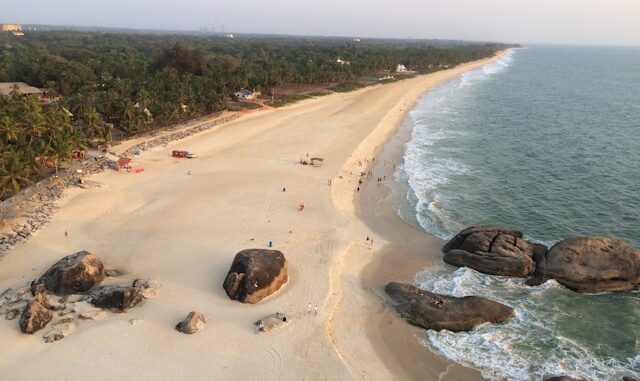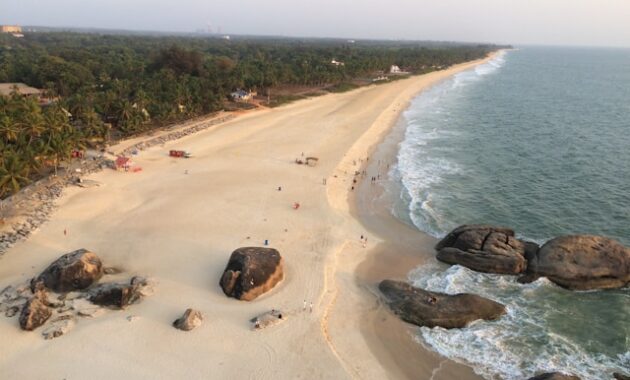
Nestled between the Western Ghats and the Arabian Sea, Mangalore emerges as a vivid tapestry of tropical beauty, cultural heritage, and ecological wonder. This coastal gem of Karnataka is more than just a port city—it is a thriving ecosystem marked by lush mangrove forests, winding rivers, and biodiverse rainforests that promise unforgettable adventures. Whether you seek tranquil escapes or thrilling explorations, Mangalore offers a vibrant canvas for every kind of traveler.
Unveiling the Mangrove Magic of Mangalore

The mangrove ecosystems surrounding Mangalore are among the most vital and scenic in southern India. These coastal wetlands, found prominently along the banks of the Gurupura and Nethravathi Rivers, act as natural barriers against erosion and offer a sanctuary to a multitude of species.
Kudremukh National Park and Pilikula Nisargadhama, in particular, feature stretches of mangrove trails that are accessible by boat. As you drift along the silent waterways, you’re likely to witness an array of avian species, including kingfishers, egrets, and brahminy kites, darting through the canopy. The roots of the mangroves twist like living sculptures, anchoring the ecosystem while hosting countless small fish, crabs, and mollusks.
Efforts by local environmental groups and government bodies have led to successful mangrove afforestation initiatives, particularly near Tannirbhavi and Panambur, contributing to ecotourism while preserving the biodiversity of the region.
River Escapes: Gurupura and Nethravathi Adventures
Two life-giving rivers—Gurupura and Nethravathi—form the heart of Mangalore’s ecological and cultural identity. Both rivers not only nourish the mangroves but also offer exceptional opportunities for kayaking, houseboat cruising, and riverfront birdwatching.
The Nethravathi River, originating from the Western Ghats, is a hub for fishing villages, coconut groves, and serene riverbanks where locals gather for evening prayers and rituals. River cruises along this stretch give travelers a front-row seat to traditional life, lush scenery, and the majestic confluence where river meets sea near Ullal.
The Gurupura River is ideal for adrenaline junkies looking for speedboat rides and jet skiing, especially around Kulur Bridge and Sultan Battery, a historic watchtower that stands as a sentinel over the tidal estuaries.
Tropical Rainforests: Gateway to the Western Ghats
Venture inland, and Mangalore opens its doors to the majestic Western Ghats, one of the world’s eight “hottest hotspots” of biological diversity. These ancient mountains cradle dense rainforests, gushing waterfalls, and rare wildlife that elevate Mangalore’s adventure quotient.
Among the must-visit locations is Kudremukh National Park, a UNESCO-listed biodiversity treasure located about 95 km from the city. Covered in evergreen forests, the park is home to species such as Malabar civets, lion-tailed macaques, leopards, and gaur. Trekking through the misty trails here is both an ecological and spiritual journey.
Another jewel is Sakleshpur, with its emerald coffee plantations and hidden rainforest trails. Ideal for hiking, camping, and birdwatching, it also connects to the Bisle Ghat, which offers panoramic views of forest canopies stretching beyond the horizon.
Eco-Tourism Experiences in Mangalore
For travelers interested in sustainable tourism, Mangalore offers curated eco-trips that highlight its environmental richness without compromising local ecosystems. These include:
- Guided Mangrove Walks and Boat Tours
Organized by conservation groups and local tour operators, these experiences educate tourists about the importance of mangrove conservation. - Farm Stays and Eco-Lodges
In regions like Moodabidri and Karkala, eco-resorts built with laterite stone and natural materials immerse you in rustic comfort surrounded by greenery. - Rainforest Retreats
Resorts near the Charmadi Ghat and Agumbe Rainforest provide immersive experiences with guided treks, night safaris, and village interactions. - Agro-Tourism in the Western Ghats
Spend your days on organic farms learning about areca nut cultivation, spice farming, and sustainable water practices that sustain local communities.
Biodiversity Hotspots and Wildlife Sanctuaries
Mangalore’s tropical climate and geographical diversity have created sanctuaries teeming with life. Highlights include:
- Someshwara Wildlife Sanctuary
Located in the foothills of the Western Ghats, this dense forest area is a haven for elephants, tigers, and endemic birds like the Malabar grey hornbill. - Kateel River Island
Famous for its Durga Parameshwari Temple, the island is also rich in flora and fauna, especially in the post-monsoon season when the rivers swell with life. - Pilikula Biological Park
Not just a zoo, this conservation park is home to endangered species and botanical gardens. Its arboretum, housing over 80 varieties of medicinal plants, is a major draw for botanists and nature lovers.
Best Time to Explore Mangalore’s Natural Beauty
The ideal time to explore Mangalore’s wild side is during the post-monsoon season (October to February). During these months, the vegetation is lush, rivers are full, and wildlife activity is at its peak. The temperature remains pleasant, perfect for hiking, boating, or simply soaking in the views.
For those interested in photography, the monsoon mist shrouding the Western Ghats creates ethereal scenes, especially around Agumbe, often referred to as the Cherrapunji of South India.
Cultural and Culinary Tie-Ins to Nature
Mangalore’s culture is deeply intertwined with its environment. The Tuluva and Konkani traditions celebrate rivers and rain in their folk songs, temple rituals, and festivals like Dasara and Janmashtami.
Local cuisine—rich with coconut, tamarind, and seafood—reflects the abundance of the sea and rivers. Don’t miss dishes like meen gassi (fish curry), neer dosa, and pathrode, made from colocasia leaves found in the wild.
Conclusion: Mangalore—Where Nature Meets the Soul
From its mystical mangroves and winding rivers to its untamed rainforests and sacred mountains, Mangalore stands as a testament to the harmony between nature and humanity. It invites travelers not just to witness but to participate in its wild rhythms, explore its eco-rich tapestry, and leave with a soul refreshed by the coastal charm and green adventures that define this unforgettable region.